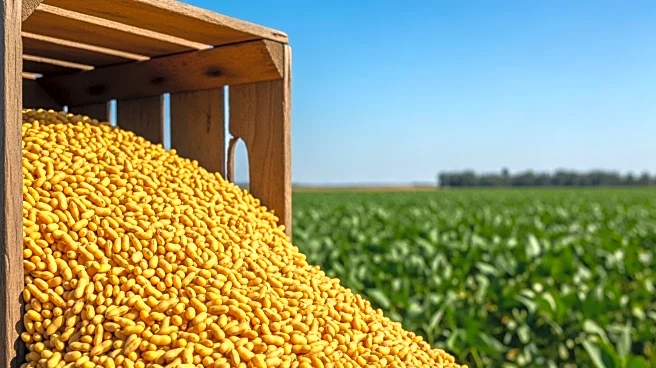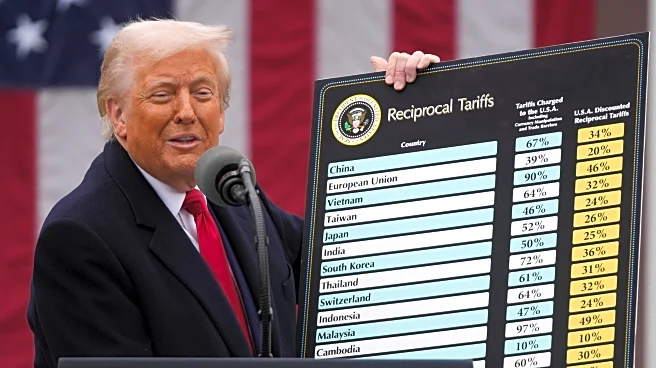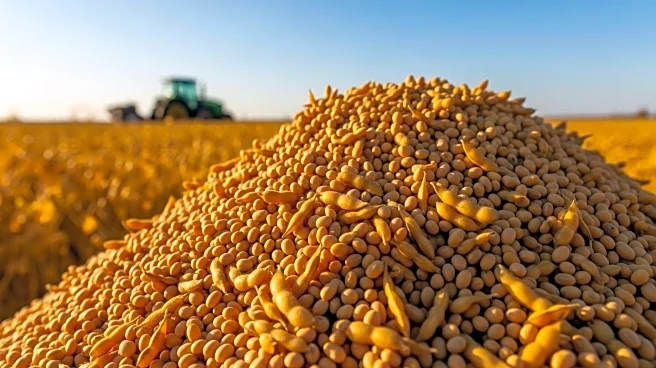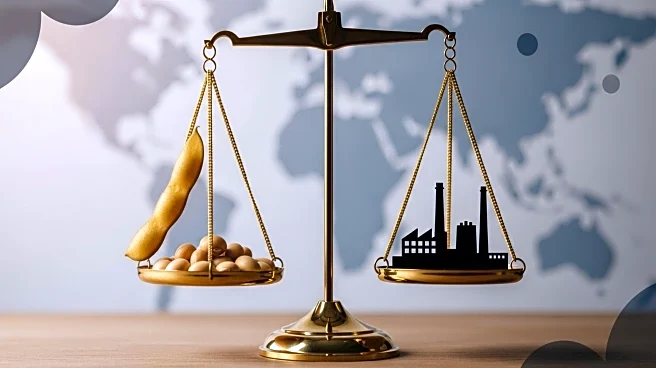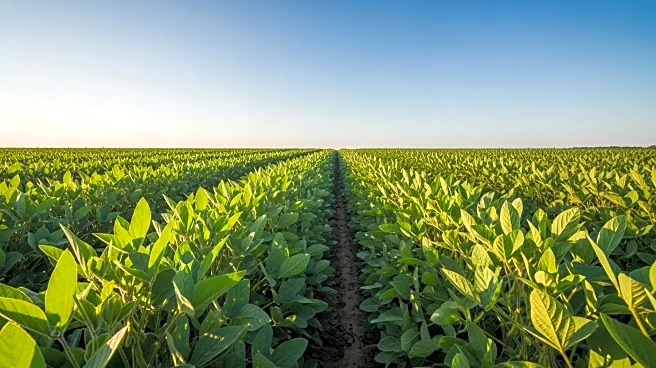What is the story about?
What's Happening?
Brazil is set to achieve a record soybean harvest in the 2025/26 season, with projections indicating an output of approximately 177.6 million metric tons. This represents a 3-4% increase over the previous year. The expansion in soybean acreage, now at 49 million hectares, has contributed to this surge. However, dry weather conditions have stalled planting progress in key regions like Mato Grosso, where farmers have paused operations due to insufficient rainfall. Despite these challenges, Brazilian exports are booming, driven by strong demand from China, which accounted for 93% of Brazil's soybean exports in September.
Why It's Important?
The record soybean harvest in Brazil is significant for the global agricultural market, particularly affecting U.S. farmers. The increased Brazilian output and exports to China have pressured U.S. soybean prices, which have reached multi-year lows. This shift in trade dynamics, with China favoring Brazilian soybeans over U.S. supply, poses challenges for American farmers who face reduced demand and lower prices. The situation underscores the impact of international trade relations and weather conditions on agricultural economics.
What's Next?
The continuation of dry weather in Brazil could affect the final yield of the soybean crop, making October rains crucial for successful planting and harvest. Additionally, the ongoing trade tensions between the U.S. and China may further influence market dynamics. Analysts are closely monitoring these factors, as well as potential policy changes in Argentina that could affect global soybean prices. The outcome of these developments will be pivotal in determining the future of U.S. soybean exports and pricing.
Beyond the Headlines
The Brazilian soybean boom highlights broader issues in global agriculture, including the reliance on specific markets like China and the vulnerability of crops to climate conditions. It also raises questions about the sustainability of agricultural practices and the need for diversification in export markets. The situation may prompt U.S. policymakers and industry leaders to explore new strategies to enhance competitiveness and resilience in the face of shifting global trade patterns.
AI Generated Content
Do you find this article useful?
